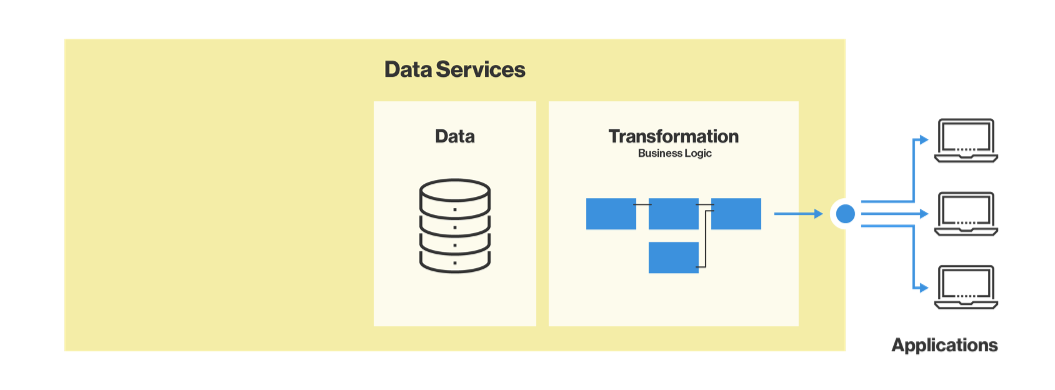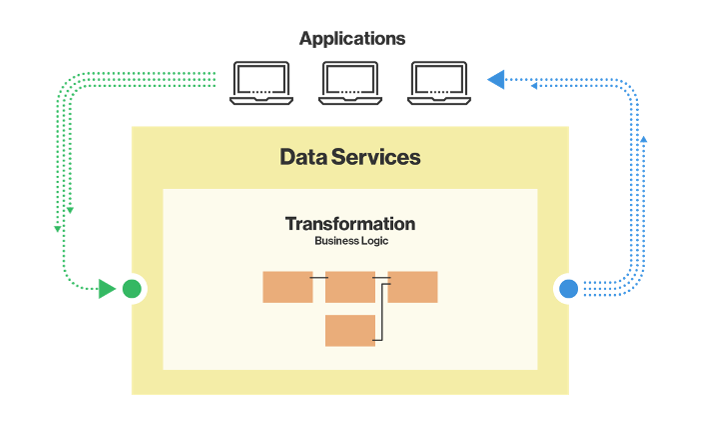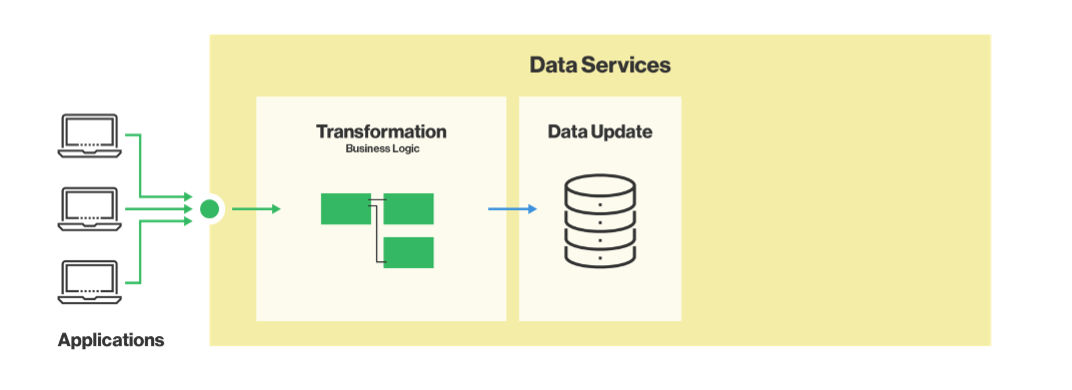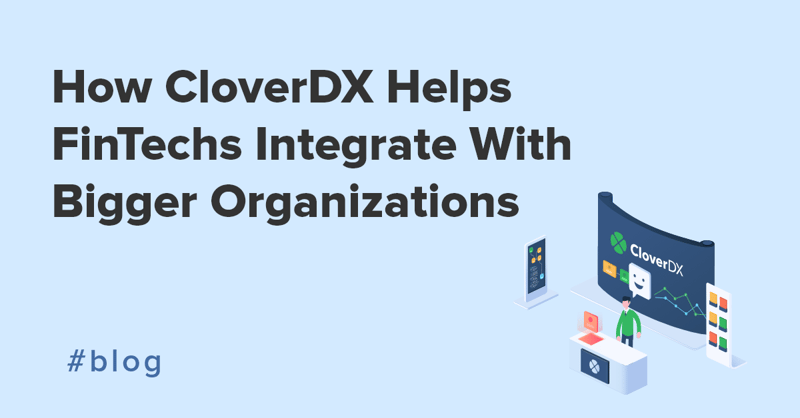Working with applications in a robust, scalable way can be challenging. After all, although APIs are a fundamental part of modern data pipelines, passing data between them isn’t always straightforward.
That said, CloverDX makes working with APIs easier, giving you the power to transform data on-demand and make it easily accessible to any user.
Let’s take a closer look at how CloverDX can help.
What is CloverDX?
CloverDX is a data management platform that enables you to design and automate data pipelines. When it comes to publishing and delivering the functionality you’ve designed in a way that’s user-friendly, CloverDX’s Data Services and Data Apps functions are here to help.
Publish data and transformations over API: 3 core design patternsAPIs and how to boost their potential
“API management is emerging as a crucial capability to navigate the digital age. But only those that master its implementation will be able to sustain the value.” - McKinsey
APIs (Application Programming Interfaces) are exposed protocols that act as intermediaries, allowing applications to communicate with one another. They make better data readily available and make it easier to share functionality.
The challenge comes when we need a way to effectively pass incongruent data between systems. Thankfully, CloverDX provides a way to design and deploy data pathways for data integration between different systems, as well as providing access to data for less-technical users.
Data Services allow you to publish data transformations as an API at a click of a button. This enables you to create modern, direct connections between data and applications for streaming and on-the-fly transformations.
Data Apps provide a way for business users to utilize powerful data processing capabilities without the technical know-how. They enable users to trigger and control complex processes, as well as build applications to enrich and upload data.
Making data flow
There are a few different ways to work with APIs. We’ll explore a couple of them here:
1. Scripting
Scripting involves manually writing programming language for a runtime system to execute tasks. This can be time-consuming, as well as prone to human error. If any variable is incorrectly entered or altered, the script won't work. Not to mention that code can't be reused easily.
2. Databases exposed as API frameworks
With databases exposed as API frameworks, you can collect data from databases easily. However, this methods is quite rigid in that it doesn’t really provide the data wrangling capabilities that you need to pass the data onto the next step in your process, which limits how effectively we can use that data.
Both of these approaches become very hard to manage and audit at scale. Ideally, especially for enterprise-level solutions, you want to create an event-driven, automated pipeline in a scalable, reliable way.
Publish data and transformations as APIs with CloverDX Data Services
Clover DX Data Services gives you the capability to capture and transform data by wrapping your business logic in an API. Once this is done, you can send it out to different targets, whether that be a specific business user, another application, or another API endpoint.
Publish data as source
We can make data available to applications, transformed on-demand to the right format. The data is pushed as an API endpoint, meaning the right data is available to the application whenever it’s requested.
A common use case here could be something like a reporting platform requesting a specific subset of data.

Publish data as target
With this option, your API acts as a ‘collection point’ driven by applications. We can gather data from different applications that we can transform and use to update our data stores - either creating new data or updating data that already exists.
Publishing business logic
By publishing your business logic as an API you can make that logic available to any application. An application can send data to your API endpoint, where some transformation is performed (e.g. an enrichment process or aggregation), and the updated data is then returned for use at a later date.
Data Services provide a way to design data processes and data logic that can be wrapped as an API for your different applications. This provides you with the ability to call your functions whenever you need. Essentially, when an application requests something, CloverDX Data Services grabs that API request, runs the business logic that you’ve defined, and sends a response.

Working with APIs in CloverDX: Watch a demo
This video walks through an example of building a workflow in CloverDX that incorporates APIs, showing you how to set parameters, run your query and also how to use CloverDX Service to monitor the status of your workflows and detect any problems.
These processes can be quite technical, however.
So, if you have non-technical users who could also make use of that powerful data processing capability, Data Apps can make that functionality available to them.
Give users access to your data processes with CloverDX Data Apps
CloverDX Data Apps are a way to provide easy access to your business transformations through a user-friendly graphical interface.
When the user selects an application, a Data Service defining the business logic runs in the background, spitting out data in the format the business needs. This gives less technical users access to powerful data functions without having to code it themselves.
See how Data Apps work in CloverDX
This video shows an example of how a non-technical user can access a CloverDX data process, without needing to access the CloverDX interface itself, but instead just using a simple web GUI.
Between Data Services and Data Apps, you'll be able to design and deliver data functionality in flexible, user-friendly ways.
Simplify your data workloads with CloverDX
CloverDX supports the exchange of data between storage, applications, and people for a more seamless and effective approach to your data workloads.
And with Data Services and Data Apps, you'll have the tools to make powerful, customized data and transformations available on-demand, accessing the power of CloverDX directly via API, all from a robust, scalable platform that gives you full execution history, as well as the ability to view the health of all your endpoints and jobs in one place.
To find out more and to see a demo of how Data Services and Data Apps work in CloverDX, check out our full webinar: Building APIs and user interfaces for your data workloads.


/building%20apis%20and%20user%20interfaces%20thumbnail-1.png?width=600&name=building%20apis%20and%20user%20interfaces%20thumbnail-1.png)







